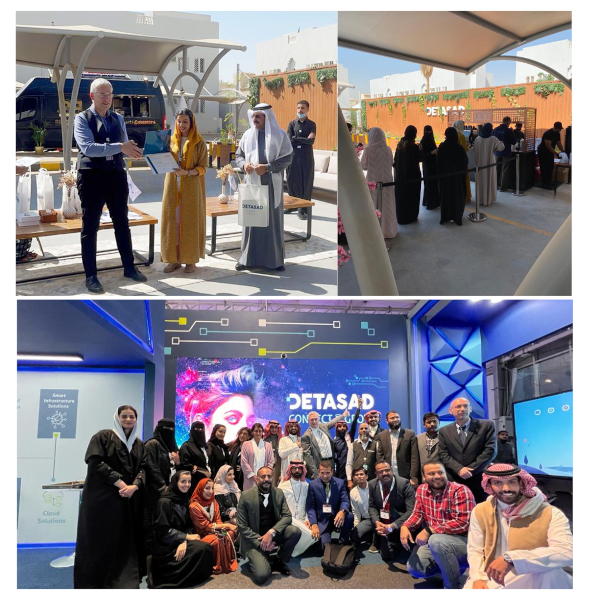Blogs
Boosting employee engagement

HR Leaders aspire to build employee engagement and a positive culture where people feel valued and engaged. This has the best outcome for culture, environment, quality of communication, employee behavior, and overall high performance for the company. How can we really do this? In my opinion, there are some efforts we can start with to build an effective foundation of employee engagement.
When choosing the leaders of the company, choose those who are “culture fit” they fit the smart positive culture you want to have in the company. So those leaders will work with you on building and demonstrating this positive culture. They will be onboard on building a positive culture as they already believe in the right ethics and have the right mentality. It starts with every leader. Every leader must demonstrate a high role model of ethics, mindset, and standards, do effective listening with his team, have a genuine desire to connect with your team and work with them and empower them to find solutions for obstacles or challenges, keep it real & genuinely connect stay on the same page and be honest. Being a role model for work ethics, ambitious standards, and compassionate communication is the best way to earn their trust.
What leaders & line managers should do?
1- Communication is everything at work. Leaders should be available and reachable for their teams. If employees cannot reach your manager to get approval on a project, it can slow down team operations.
2- Have an effective employee retention plan, invest in performance improvement, and work with a high-potential team. Provide them with some short coaching sessions, teaching them to hold a mirror and be honest with themselves about what they need to work on.
3-Teach them the concept of a leader, that leadership is a mindset, not a position. Leadership is only successful if he/she is aware of their personality, areas to improve, how to deal with negative emotions and negative situations, and has a high work ethic. The more a leader knows themselves and works on it, the more they can succeed and be influential.
4- Build a positive and trusting relationship with your team, and give feedback on their performance through the one on one weekly meetings or casual monthly lunch, it has to be honest, clear, and respectful and maintain a positive spirit rather than breaking their spirit, this way your employees will see your care of their success and improvement and will collaborate to work harder as the relationship is maintained trusting and at the same time the expectations were clear. And they will feel comfortable that they know what to do to improve their job. They will also feel safe, valued, and heard.
Company tools: You can use tools to increase employee engagement to improve employee experience & company culture. To have real-time feedback on how employees feel, to improve before issues start. Have employee engagement tools like software, apps, or tactics to improve employee satisfaction and engagement. For example, a company that wants to break down communication barriers might introduce an internal chat tool, like Microsoft Teams.
Benefits of employee engagement software
• Boost employee engagement and retention
• Increases teamwork and collaboration
• Better employee morale and satisfaction
• Allows continuous feedback from employees
• Improves employee performance and productivity
• Make employees feel valued, appreciated, and heard
On a company-wide:
1-Have top-performing employees recognized on a monthly basis. And every year for the high performers as well. Spread and encourage the culture of appreciating people’s efforts and contributions every day. Employee engagement tactics can help workers feel more connected, motivated, and satisfied with their jobs.
2- Host a company all-hands Having a company-wide meeting to start or end the month/quarter can be a fantastic opportunity for everyone to get together and share useful feedback. For example, employees can share what is going well or what they need extra help with. This will create a culture of open communication, and keep employees engaged if they struggle with obstacles in their work.
3- Have employees shout each other out during team meetings to thank or congratulate each other for their magnificent work. Employee engagement software is a wonderful way to encourage employees to give each other kudos. However, instilling this practice in team meetings can be even more effective. During an all-hands meeting or team call, ask individuals if they have any “shoutouts.” Employees can publicly thank or congratulate each other for their magnificent work.
4- Spread awareness of the importance of global mindsets. Negotiating in a multicultural environment or while negotiating, we should be aware of how culture affects negotiating styles. Employees and leaders sometimes engage in cross-cultural discussions or negotiations. One solution is to consider a “synergistic approach” that recognizes differences in negotiating styles across cultures and uses those differences to craft agreements that allow both sides to win. To do this, employees should consider the cultural standpoint of the other person in the negotiation, understand the values that the other person is trying to communicate or bring to the conversation, and what they are focusing on achieving or looking for in this discussion. It is possible that, by understanding our differences, and values, negotiators can avoid conflict, disagreement, or having to compromise their ideas or directions. Since each person may have different goals, it may be possible to reach win-win agreements by understanding the point of view of the other person, which enables the team to create trust and respect between each other.
Active listening is a technique used by people who are fully engaged with their team. The principles of active listening include:
● Inviting the other person into the conversation. Ask questions that encourage people to speak & avoid disturbing or talking while the other person speaks.
● Focusing on what the other person is saying. This means thinking about the message being communicated right now and maintaining soft, attentive eye contact with the other person-not a rigid stare but interested engagement. Nod to encourage speakers to continue.
● Processing unspoken or nonverbal messages the other person sends. Processing nonverbals can be assisted by using emotional intelligence—seeing the conversation from the other person’s perspective and imagining how the other person might respond to what is being said. Be aware of the nonverbal messages you communicate. The tone of your voice and posture can show your feelings about what you are saying. A confident tone and strong eye contact convey your commitment. You can shape the other person’s reaction to what you are saying by mirroring the other person’s nonverbal. The idea is that by carefully following the other person’s physical actions and postures with similar postures and actions, you create a physiological connection that can become a cognitive connection. In addition, we can do simple things to engage people within the company.
● Ask a team member how they are, genuinely say good morning, and show your desire & interest in connecting with them professionally.
● Be aware of posture and movement—maintain a relaxed posture, moving slowly, following, and mirroring the other person’s posture if appropriate.
● Gesture—using hand movements to emphasize key points.
● Eye contact—establishing soft (not staring) contact with the other person’s eyes, shifting gaze slowly to include all members of the team or the people in the conversation.
● Do not interrupt people while they speak. And show the utmost respect for them and what they have to say.
● Vocal qualities—speaking clearly, loudly enough to be heard, and at a reasonable speed.
DETASAD People & Culture Department





